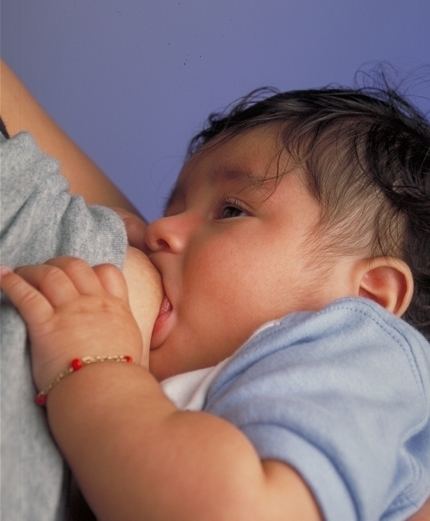Type Behavioral Typical use ? | Perfect use <2% Reversibility Yes | |
 | ||
First use Prehistory;Ecological method 1971 Duration effect Up to 6 months (longer in some cases, with greater failure rate) | ||
Lactational amenorrhea is the temporary postnatal infertility that occurs when a woman is amenorrheic (not menstruating) and fully breastfeeding.
Contents
Breastfeeding infertility
For women who follow the suggestions and meet the criteria (listed below), LAM is >98% effective during the first six months postpartum.
If not combined with barrier contraceptives, spermicides, hormonal contraceptives, or intrauterine devices, lactational amenorrhea method (LAM) may be considered natural family planning by the Roman Catholic Church.
Physiology
Breastfeeding delays the resumption of normal ovarian cycles by disrupting the pattern of pulsatile release of GnRH from the hypothalamus and hence LH from the pituitary. The plasma concentrations of FSH during lactation are sufficient to induce follicle growth, but the inadequate pulsatile LH signal results in a reduced estradiol production by these follicles. When follicle growth and estradiol secretion does increase to normal, the suckling stimulus prevents the generation of a normal preovulatory LH surge and follicles either fail to rupture, or become atretic or cystic. Only when the suckling stimulus declines sufficiently to allow generation of a normal preovulatory LH surge to occur will ovulation take place with the formation of a corpus luteum of variable normality. Thus suckling delays the resumption of normal ovarian cyclicity by disrupting but not totally inhibiting, the normal pattern of release of GnRH by the hypothalamus. The mechanism of suckling-induced disruption of GnRH release remains unknown.
Return of fertility
Return of menstruation following childbirth varies widely among individuals. A strong relationship has been observed between the amount of suckling and the contraceptive effect, such that the combination of feeding on demand rather than on a schedule and feeding only breast milk rather than supplementing the diet with other foods will greatly extend the period of effective contraception. The closer a woman's behavior is to the Seven Standards of ecological breastfeeding, the later (on average) her cycles will return. Average return of menses for women following all seven criteria is 14 months after childbirth, with some reports being as soon as 2 months while others are as late as 42 months. Couples who desire spacing of 18 to 30 months between children can often achieve this through breastfeeding alone.
Although the first post-partum cycle is sometimes anovulatory (reducing the likelihood of becoming pregnant again before having a post-partum period), subsequent cycles are almost always ovulatory and therefore must be considered fertile. However, some women find that breastfeeding interferes with fertility even after ovulation has resumed. Luteal phases being too short to sustain pregnancy is a common example.
